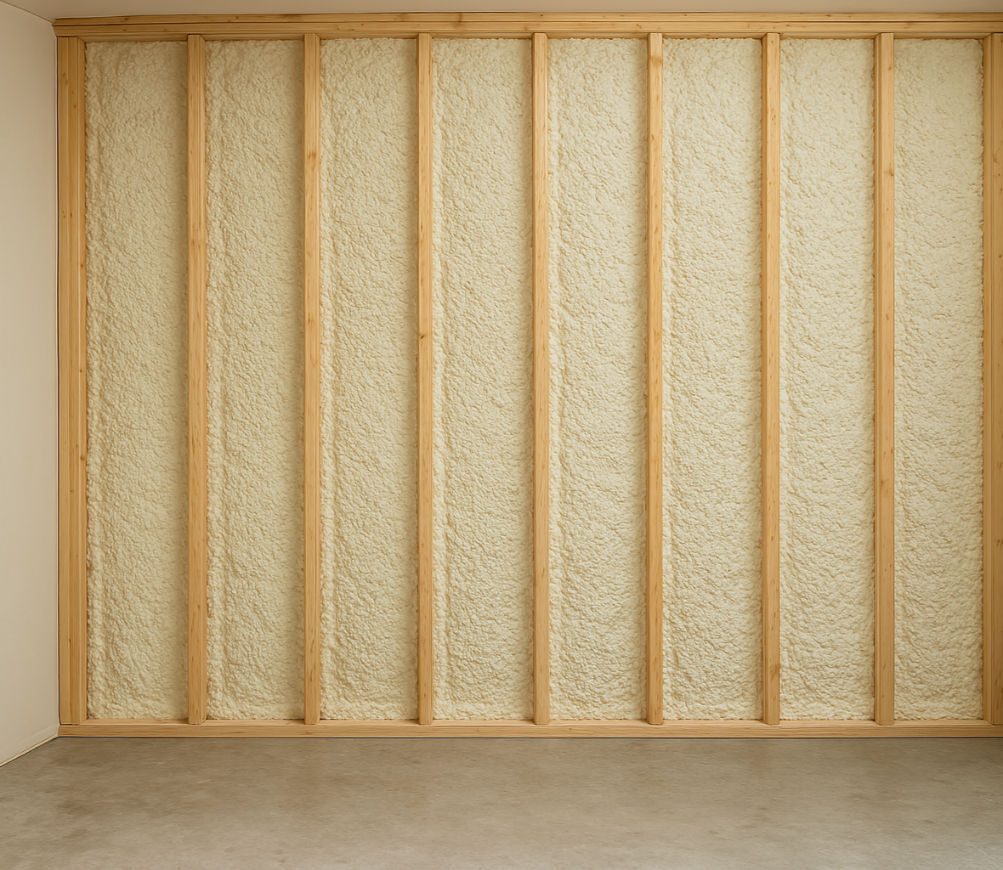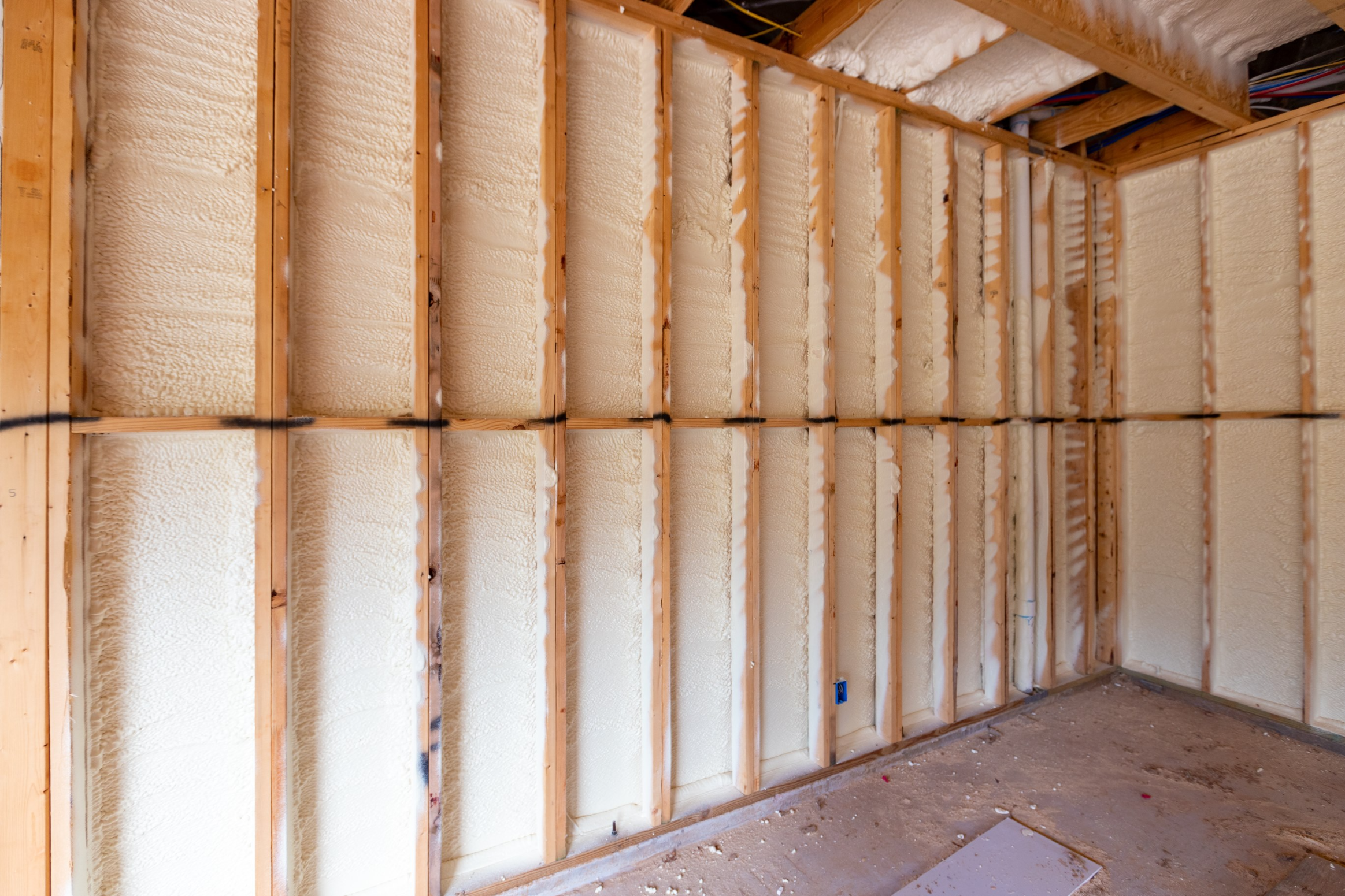Closed-cell spray foam offers high insulation performance, structural reinforcement, and effective moisture control. Compared to other insulation types, it provides one of the highest R-values per inch, meaning superior thermal resistance in tighter spaces. Its rigid composition enhances wall strength and deters air infiltration, helping to stabilize indoor temperatures more efficiently.
This article presents a detailed breakdown of its benefits, technical performance, and considerations before installation. The information reflects field experience with installation variables, climate impacts, and common decision factors seen across residential and commercial projects.
Key Performance Advantages
Closed-cell spray foam offers several measurable benefits for wall insulation. The following table summarizes the primary features in comparison with other common insulation types.
Comparison Table: Closed-Cell Spray Foam vs Other Insulation Types
| Feature | Closed-Cell Spray Foam | Open-Cell Spray Foam | Fiberglass Batt | Blown-In Cellulose |
|---|---|---|---|---|
| R-Value per Inch | 6.0 to 7.5 | 3.5 to 4.0 | 2.9 to 3.8 | 3.2 to 3.8 |
| Air Barrier | Yes | Partial | No | No |
| Moisture Resistance | High | Low | Low | Moderate |
| Adds Structural Strength | Yes | No | No | No |
| Application Thickness Control | Excellent | Good | Limited | Moderate |
| Mold and Mildew Resistance | High | Low | Low | Moderate |
| Lifespan | 30+ Years | 20–30 Years | 10–25 Years | 15–30 Years |
| Sound Dampening | Moderate | High | Moderate | High |
Technical Performance Data
Closed-cell spray foam insulation performance is driven by several measurable specifications. These values represent standard industry ratings based on installed product in typical residential wall assemblies.
Technical Specs Table
| Property | Value Range | Unit/Standard |
|---|---|---|
| R-Value (per inch) | 6.0 – 7.5 | ASTM C518 |
| Water Absorption | < 2.0% | ASTM D2842 |
| Air Permeance | < 0.02 L/s/m\u00b2 @ 75 Pa | ASTM E2178 |
| Compressive Strength | 25 – 40 psi | ASTM D1621 |
| Closed Cell Content | > 90% | ASTM D6226 |
| Fire Rating | Class I | ASTM E84 |
| Vapor Permeability | 0.8 perms (at 1.5 inch) | ASTM E96 |
Performance in Mountain-West Climates
In colder, semi-arid areas such as southern Idaho, closed-cell spray foam prevents cold drafts and reduces thermal bridging along framing. Its low vapor permeability suits regions with high indoor-outdoor humidity shifts. Installers often apply it at a minimum 2-inch thickness for effective vapor resistance and air sealing.
Bonus Tip
Experienced installers in colder climates often layer closed-cell foam beneath other insulations to create hybrid wall assemblies that meet code while improving cost-efficiency.

Things to Consider Before Making a Decision
Choosing closed-cell spray foam involves upfront planning. Installation must be done by certified applicators due to curing hazards and equipment complexity. Wall access, wiring clearance, and ventilation planning should be resolved beforehand.
Consider:
- Cost per square foot is higher than other insulation types.
- Rigid finish can complicate future remodeling or retrofits.
- Application must meet local fire code requirements, which may mandate thermal or ignition barriers.
Bonus Tip
Always ask about application thickness and cure time. Performance varies if the foam is underapplied or exposed too soon to interior finishing.
Relevant Services from Valley Spray Works
Valley Spray Works provides installation solutions closely aligned with closed-cell spray foam applications:
- Closed-Cell Spray Foam: High-R insulation with air sealing and moisture resistance in one step.
- Intumescent Coatings: Required in many closed-cell projects as ignition barriers in exposed or semi-finished spaces.
- Thermal Insulation Coating: Supplementary solution in areas where mechanical or chemical vapor barriers are needed.
- Fluid Applied Vapor Barrier: For exterior walls and commercial facades where foam must be paired with external vapor control.
Common Questions About Closed-Cell Spray Foam
Is closed-cell foam worth the higher cost for walls?
Yes, especially in climates with extreme temperatures or where air sealing is a top priority.
Does it help reduce energy bills long-term?
Substantially. Studies show homes using closed-cell foam cut heating and cooling costs by up to 30% (Source: Building Science Corporation).
Can it be used in all wall types?
Yes, but adjustments are required for masonry, metal framing, or historical structures.
Is it safe after installation?
Once cured, closed-cell foam is inert. Ventilation during and immediately after application is required.
Get Expert Insulation Guidance
Closed-cell spray foam offers long-term performance, moisture control, and thermal consistency when properly installed. Evaluate budget, wall conditions, and building use to choose the right insulation strategy.
For reliable installation and consultation:
Valley Spray WorksPhone: (208) 539-5281 Email: [email protected]
FAQs
How does closed-cell spray foam hold up over time?
It retains shape and R-value for over 30 years, resisting moisture and pest damage.
Can this insulation be used in combination with other materials?
Yes. Hybrid systems use closed-cell foam with fiberglass or cellulose for performance and budget balance.
Does it require a vapor barrier?
Not usually, but code and wall composition can influence whether additional barriers are needed.
Can I install it myself?
No. Installation requires pressurized equipment and trained application to meet safety and performance standards.
How is closed-cell different from open-cell foam?
Closed-cell is denser, has higher R-value, and blocks moisture; open-cell is lighter and better for sound dampening.



